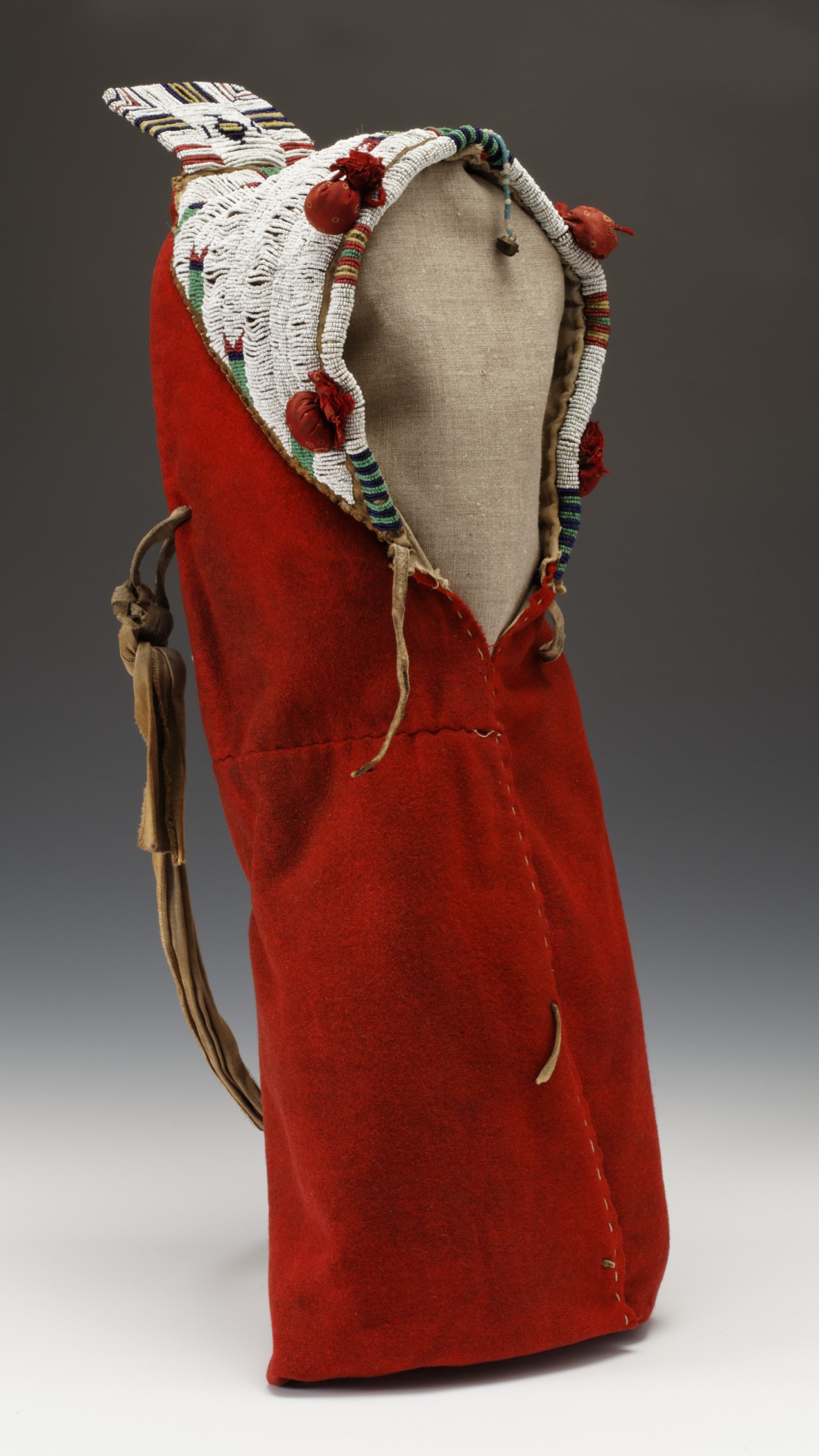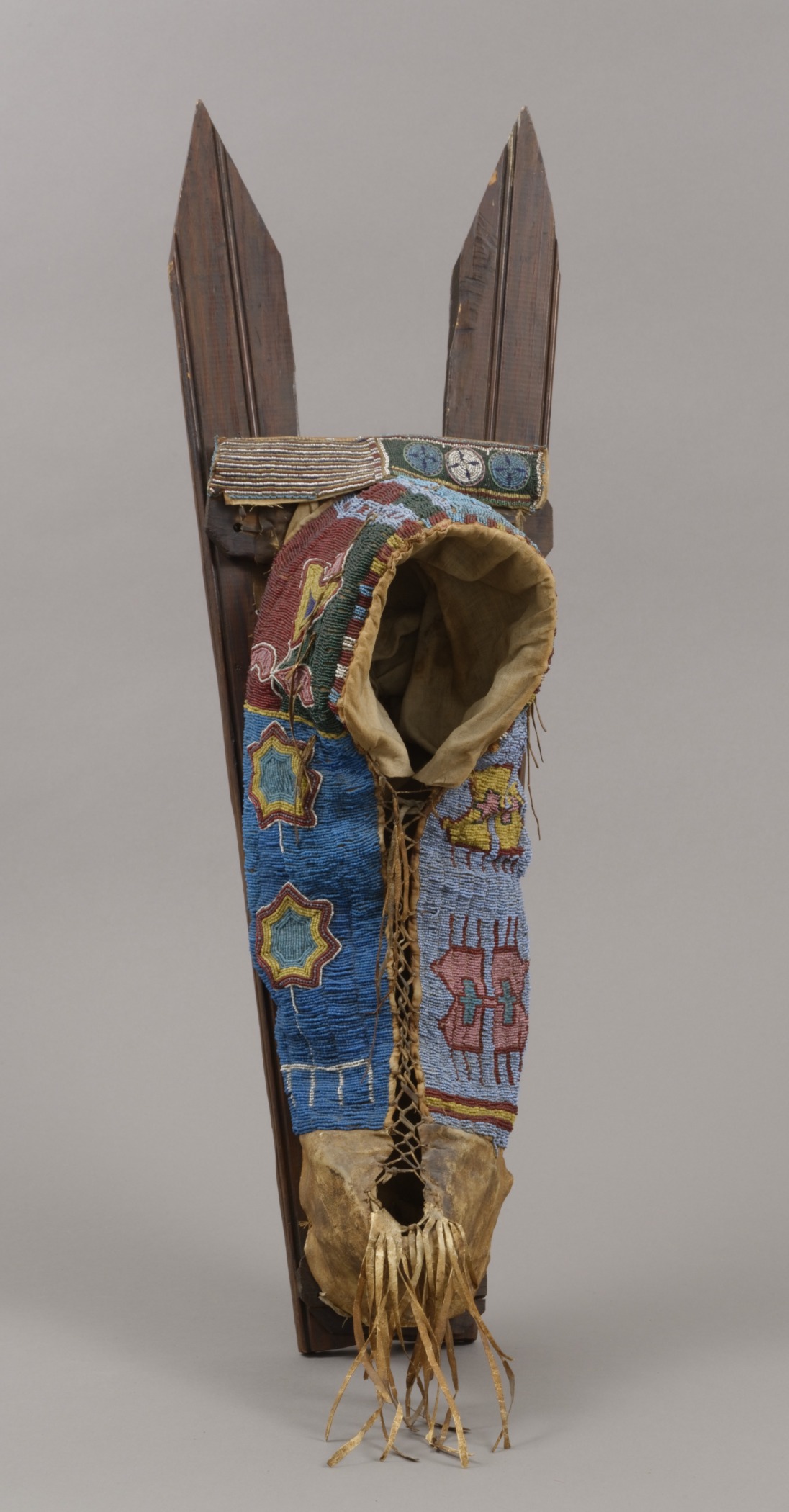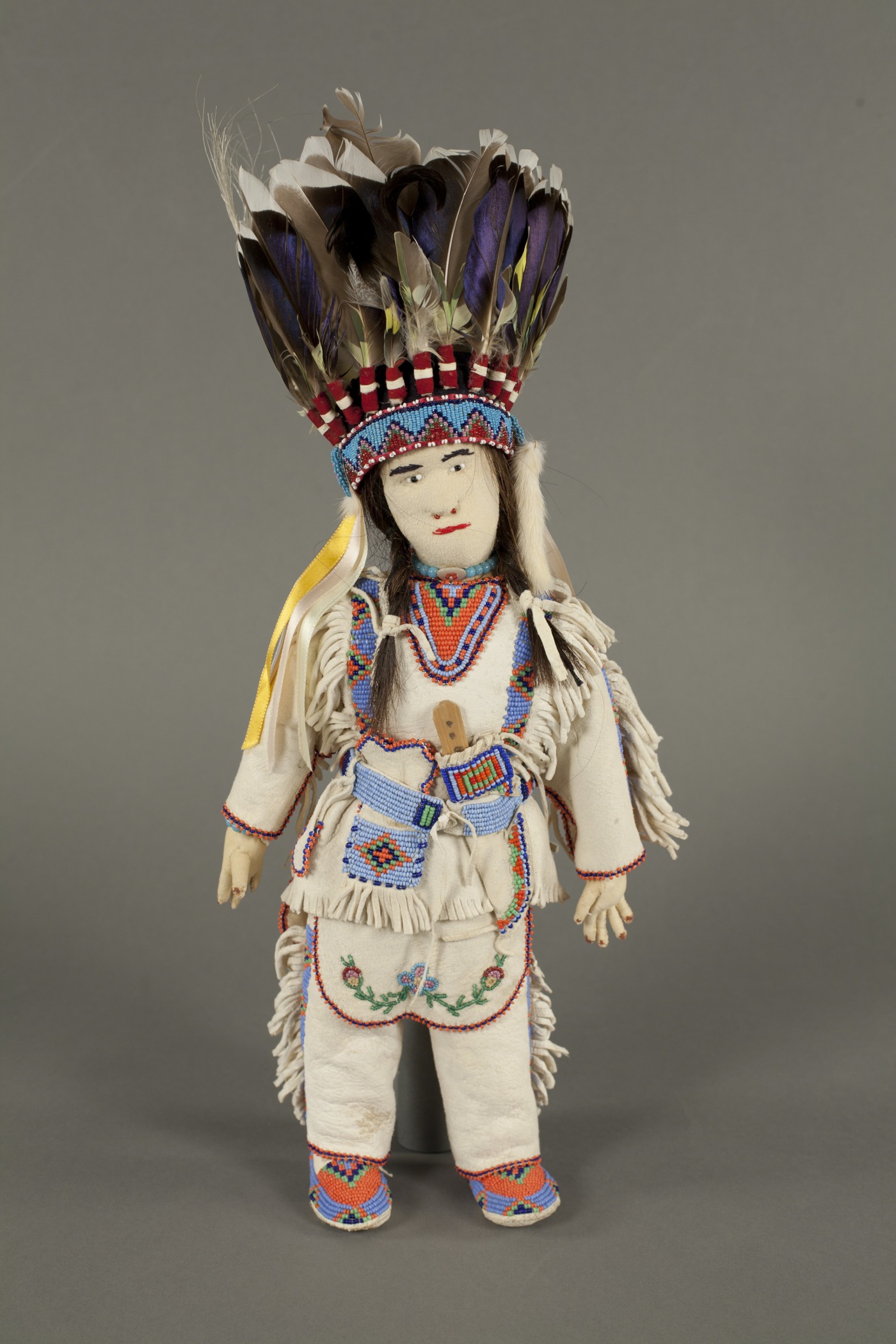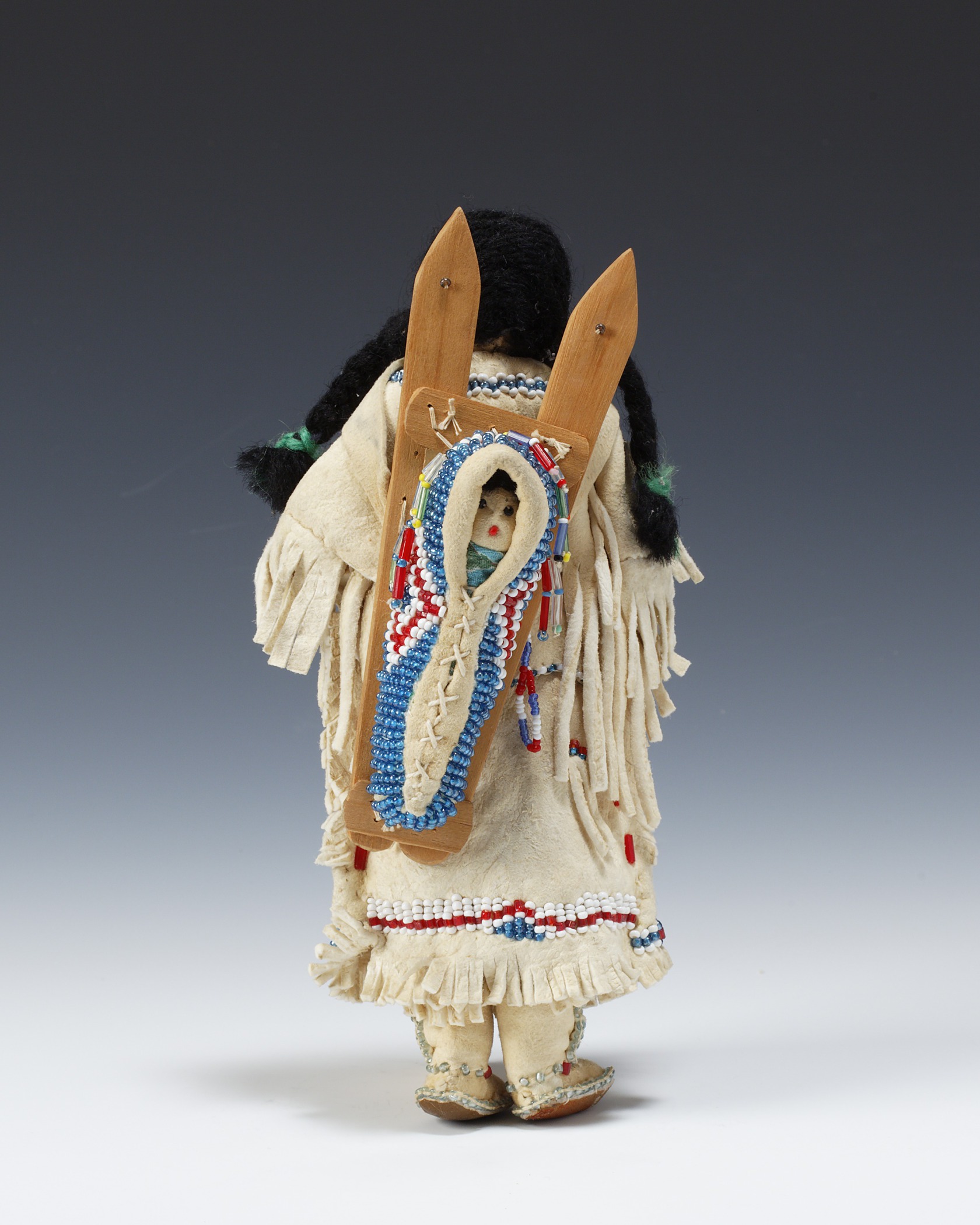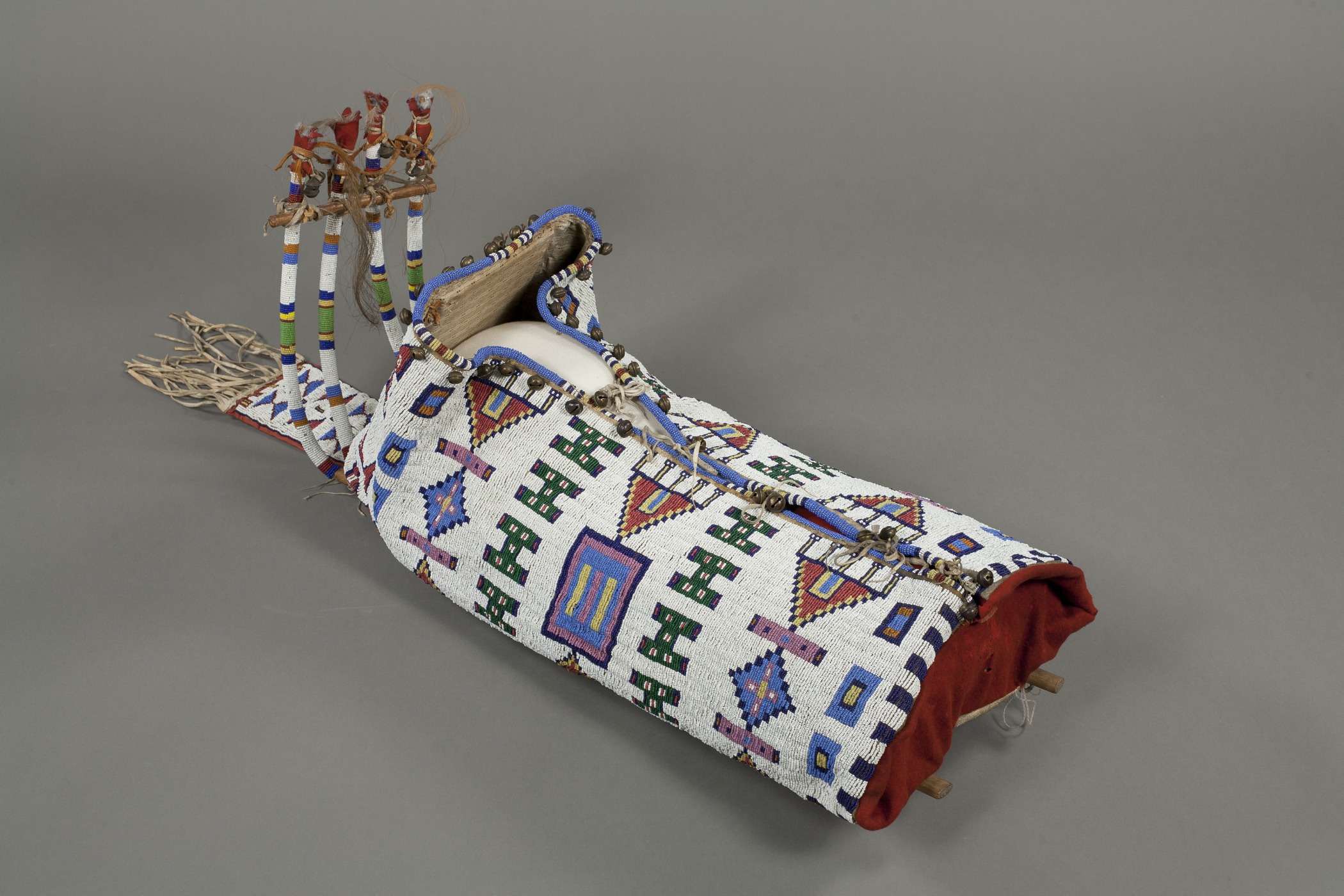Mrs. Lone Dog (Pretty Eagle), American (Lakota), late 19th–early 20th century
Cradle
- About 1890
- Glass beads, native-tanned hide, wood, cotton cloth, wool cloth, brass bells, horse hair, downy feathers, dye, ochre, cord, and thread
- 33 1/16 × 13 3/4 × 10 5/8 in.
Hood Museum of Art, Dartmouth College: Bequest of Frank C. and Clara G. Churchill; 46.17.9831
visibilityLook & DiscussChildren’s cradles, along with clothing, and toys, are often intricately crafted and decorated to show the love and joy felt at the arrival of a new baby. In some communities, cradleboards are still made or handed down as baby gifts.
explore the object
In this cradle, the baby was placed on a U-shaped back board, and then swaddled or wrapped in soft, red wool. As another securing measure, an outer layer of heavily beaded material tied the baby inside. This cradle could be carried in a mother’s arms or tied to her back. A wooden panel protected the baby’s head, while amulets, bells, or toys were tied to the arched projections above, providing the baby with entertainment as well as protection. The red, green, blue, yellow, orange, and lavender beadwork is organized into rows of diamonds and rectangles on a white beaded background, typical of Lakota designs. These designs celebrate and surround the child in tribal identity.
It took Pretty Eagle an entire year to make this cradle. Her skill would have earned her a great deal of respect and recognition within her community.
In some communities, women still make cradles and cradleboards or hand them down as baby gifts.
Meet the Artist
This baby carrier was crafted by Mrs. Lone Dog (Pretty Eagle) of Fort Peck, Montana, and sold to Frank Churchill, a US Indian inspector, in the early 1900s. Mrs. Lone Dog had made baby carriers for relatives for years. Reacting to the increasing railroad and tourist traffic through the western United States at the turn of the twentieth century, and the white American public’s interest in collecting Native American crafts, she, like many Plains Indians, began engaging in a new economy on the reservation—the creation of objects specifically for sale to white Americans. Mrs. Churchill said of Pretty Eagle, “She was a grandmother but she was making them because she loved to do it.”
Activity: Cradle Matching Game
Each Plains culture created a different type of cradle or cradleboard. These baby carriers include protective elements because as families moved from place to place, babies had to be carried or lashed to horses or a travois, a type of sled. While mothers worked, they also had to leave their babies in safe carriers.
Match the cradles and cradleboards below to their culture and description below. (Answers can be found at the bottom of the page.).
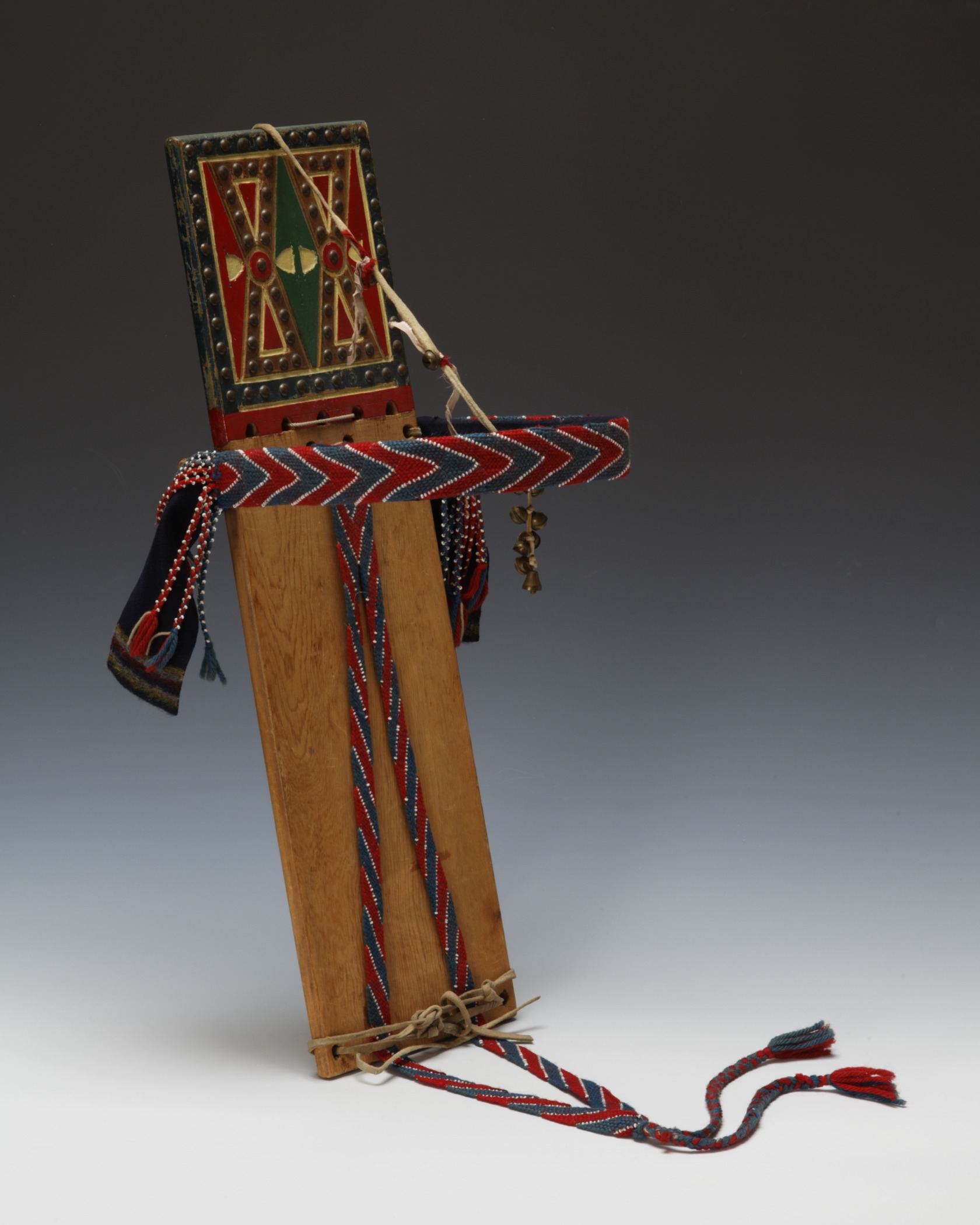

Cultures & Descriptions
Osage
Cradles by eastern tribes, like the Osage and Ponca, look very much like cradles of the Northeast Woodlands. Children are wrapped in soft hides or cloth and lashed to a flat wooden board with rawhide. The wooden board has a bowed piece of wood that acts like a bumper to protect the baby’s head. The board is often decorated on top with brass tacks, beads, painted or embroidered cloth, paint, and tassels.
Sioux/Cheyenne
The Sioux and Cheyenne created V-shaped or rectangular hooded bags made of cloth or hide decorated with quill or beadwork to hold their babies. These cradles were often used without frames and could be tied to a mother’s back with a blanket or held in the arms.
Inunaina (Arapaho)
Cradles of Northeastern tribes, like the Arapaho, used an inverted U-shaped bag to hold their babies. The bag covered the curved portion of an interior wooden frame that extended above the hood. An extra layer of heavily beaded material tied the baby inside and provided additional protection.
Ka’igwu (Kiowa)
In Kiowa cradleboards, a V-shaped wooden frame extends a foot or more above the top of a V-shaped or straight-sided carrying bag. The bag was lashed to the frame with hide lacings. The child was placed inside the bag and secured from the chest to the toes. A stiffened rawhide hood protected the child’s head from injury and the elements.
Plains: Gender Roles & Family
Answers: Cradle Matching Game
Cradle 1: Osage, toy cradleboard for a doll, about 1900. Wood, brass tacks, brass bells, glass beads, yarn, paint, wool cloth, cotton cloth, native-tanned hide, ribbon, cord, string, and metal, 24 3/16 × 8 9/16 × 9 1/16 in. Hood Museum of Art, Dartmouth College: Purchased through the Hood Museum of Art Acquisitions Fund in honor of Mary Alice Kean Raynolds and David R. W. Raynolds, Class of 1949; 2008.66.
Cradle 2: Inunaina (Arapaho), cradle, about 1870. Glass beads, Stroud trade wool, native-tanned bison hide, cow rawhide lining, wood, willow sticks, muslin cloth, brass bell, string, sinew, thread, and prayer bundle, 43 5/16 × 14 9/16 in. Hood Museum of Art, Dartmouth College: Gift of Guido R. Rahr, Sr., Class of 1951P; 985.47.26531.
Cradle 3: Ka’igwu (Kiowa), lattice cradle baby carrier, about 1910. Wood (recycled beadboard), glass seed beads, hide, and fabric, 35 13/16 × 11 7/16 × 8 1/16 in. Hood Museum of Art, Dartmouth College: Gift of Putnam W. Blodgett, Class of 1953, Tuck 1961; 2006.29.
Cradle 4: Mrs. Lone Dog (Pretty Eagle), American (Lakota), late 19th–early 20th century, cradle, about 1890. Glass beads, native-tanned hide, wood, cotton cloth, wool cloth, brass bells, horse hair, downy feathers, dye, ochre, cord, and thread, 33 1/16 × 13 3/4 × 10 5/8 in. Hood Museum of Art, Dartmouth College: Bequest of Frank C. and Clara G. Churchill; 46.17.9831.

